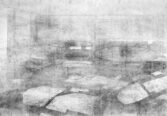
I had recently visited a number of exhibitions which had given me fresh ideas about abstraction: Postwar: Art Between the Pacific and the Atlantic, 1945-1965 (Munich, 2016) and Soul of a Nation: Art in the Age of Black Power 1963-1983 (London, 2017), being two stand out examples. I was especially interested in a group of artists associated with ‘Black abstraction’ from the second half 20th century, most of whose work I was familiar with but had not always had the context for. Then I re-read James Baldwin’s short story ’Sonny’s Blues’. And now I stood before Rembrandt’s painting Oopjen Coppit. My intuition told me they were connected. I began to write, the outcome of which is an essay about Oopjen, Black Aesthetics, and abstraction.



